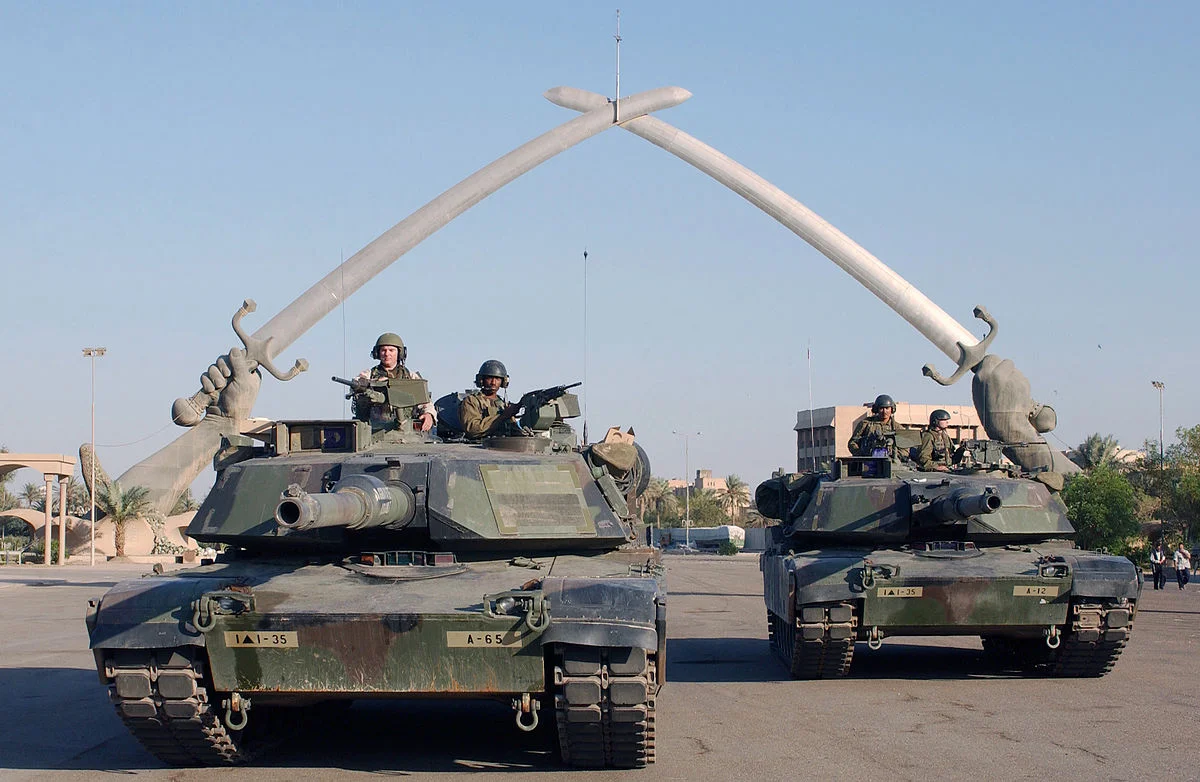At some point in the future, historians may look back on the current era as the dawn of a human-machine revolution or perhaps even the beginnings of the sixth revolution in military affairs. Williamson Murray notes in The Dynamics of Military Revolution that such things are rarely apparent in advance, and only obvious in retrospect and in the wake of remarkable battlefield success. While certainly the societal, technological, political, and military ingredients of such a revolution are present, whether this consists of a revolution in military affairs will be left to future historical debate.
Looking Back to the Future: The Beginnings of Drones and Manned Aerial Warfare
Making predictions about the future is an impossible task, in particular when the focus is on technologies at their beginning. History is riddled with false prophecies, be they either exaggerations or understatements: from predictions that a technology will end war once and for all—like the telegraph or nuclear weapons—to such understatements as Watson’s famous prediction that there was a global market for only five computers. It is tough to judge whether changes are ground-breaking, or only appear so from the close proximity of a contemporary. At the same time, people throughout history have ignored fundamental changes happening before their eyes, as changes took time to unfold or initially only concerned a limited area.
Autonomous Weapons: Man’s Best Friend
As early as 1599, Shakespeare’s turn of phrase for Anthony in his play Julius Caesar tacitly acknowledged a 200-year-old human acceptance of autonomous war machines. As modern-day ethicists agonize over the autonomy’s ascendance, they ignore 2,600 years of wartime employment of autonomous, self-replicating killing machines that are by popular opinion still our best friend.
Introducing #WarBots
While it took centuries to move from Da Vinci’s vision to the Wright Brothers’ reality, the flash to bang on drones and beyond is rapidly shrinking. Whether we are still on the cusp or already tumbling down the rabbit hole, such technology will continue to combine in wonderful and terrible ways. We hope you enjoy this series as much as we enjoyed putting it together. More importantly, we hope it forces us to think about the future of warfare in new and uncomfortable ways.
Changing Calculus and Learning from our Enemies
Suicide Bombing has been the subject of scholarly works and studies in multiple campaigns. For the U.S. military, suicide tactics have been an integral part of the threat environment for well over a decade. Familiarity with the concept generates a bit of complacency, but this is a false familiarity obscuring the reality that suicide bombing has changed in the last decade.
Q-Boats and Chaos: Hybrid War on the High Seas
Maritime hybrid warfare has the potential to become a major issue across all the levels of warfare. Its methods are numerous, but will likely involve autonomous systems, drones, Q-boats, little blue sailors, cyber-attacks, and propaganda. Ultimately, these methods will be hard to combat, but their effects can be reduced.
Multi-Domain Battle: The Need for Integration with National Strategy
Multi-Domain Battle has many flaws, but its most fatal is that as presently envisioned it risks being an underachiever. The United States, if it is to re-exert its global position, needs a military strategic concept that is more than just an iterative update of Air/Land Battle. It needs one that is great, if not revolutionary. Those designing Multi-Domain Battle are right in seeking a land force able to contest and win the fight in and across all domains, and which takes advantage of technological advances in connectivity, visibility, and lethality. This is a good start, but only if it nests Multi-Domain Battle within a military and national strategy.
Rethinking Sun Tzu: POWs and the Captured Chariot Incentive Program
#Reviewing The Qur’an: A Chronological Modern English Interpretation
This volume accomplishes precisely what its author intended by providing those with sufficient intellectual curiosity a means of seeking deeper understanding of Islam and forming their own opinion of the Qur’an. This mission is both inspirational and aspirational. The gap we must close in modern society to achieve lasting international stability is vast. It is an intellectual divide that is multi-dimensional, layered, nuanced, complex, and sometimes maddening. Howk’s refreshed interpretation of the Qur’an is a noteworthy step in bridging this divide through respect and acceptance.
Examining War's Economic Incentives and Sanctions
Over the past 100 years economics has been transformed from a prime motivator for war, through the imperialist ideals of national prestige and territorial expansion, to a tool best used as a means to try and avoid war. Additionally through the establishment of the rules based global order that emerged after the Second World War the economic motivation for war has not only been diminished but has effectively been rendered illegal and immoral. While economic considerations may be enshrined in the architecture of the current global order and serve to provide a means for modern nations to collectively pursue peace through mutual prosperity (as demonstrated by the EU), economic considerations do nothing to deter an irrational actor motivated by non-material means.
Is Iron Dome a Poisoned Chalice? Strategic Risks From Tactical Success
While Iron Dome’s past success makes it a tempting solution to future challenges, a careful look at the system’s success to date should engender caution. The system has performed well against an adversary with a limited arsenal of rockets, targeting relatively sparsely inhabited areas. However, even there, it has produced unexpected negative political consequences, feeding international perception of Israel as disproportionately aggressive and attenuating strategic ends to be less decisive. In future conflicts, even this mixed outcome may not be achieved.
Military Command as Moral Prudence: Examples from History and Literature
Thomas Aquinas devotes a small section of his magnum opus, the Summa Theologica, to the question of whether military command is a form of moral prudence, concluding it is. Military command may resemble art, and it requires fortitude, but the exercise of command calls for prudence, which is unique among the Aristotelian virtues as cataloged by Aquinas in that it is both moral and intellectual. For the soldier, moral prudence involves a balancing act of ends and means, a golden mean of victory and its cost.
#Reviewing Soldiers and Civilization
What do the ideas of narrative as doctrine, Stoicism, defeat, chivalry, and fighting for pay tell us about the development of military professionalism in the West? In his new volume, Soldiers and Civilization: How the Profession of Arms Thought and Fought the Modern World into Existence, Reed Robert Bonadonna addresses the role these and other developments in military history played in the development of military professionalism. His book is a fascinating and deep journey through military and intellectual history, which seeks to bring a historical and literary focus to a topic that tends to be dominated by social scientists such as Samuel Huntington or by ethicists rooted in the military practice such as Anthony Hartle. This volume appears unique in its focus and brings an important voice to the debate over the sources and nature of military professionalism in the West.
Chinese State Sponsored Hacking: It’s Time To Reach an Effective and Lasting Bilateral Agreement on Cyberwarfare
It remains to be seen whether or not the current administration’s approach to China will bring further progress in terms of limiting cyber attacks. Ultimately, extending the terms of the 2015 agreement to explicitly ban attacks, to encourage co-operation in hardening financial institutions against them, and perhaps even mandate bi-lateral responses should they occur, would be in the mutual interest of both the U.S. and China.
On the Business Models of War
The ultimate question begged by these musings is to consider what effect more than fifty years of trying to implement business management models into the American military has had? Are we more efficient and monetarily lean than ever before? It doesn’t seem so. We have the world’s most expensive military, with the costliest equipment and highest operating margins. It is difficult to draw a direct causal argument, despite the apparent correlation in time, and beyond the scope of this article to do so. The argument is simply that military effectiveness is a matter that ought not to be judged by monetary value (profit or cost-savings efficiency) of the services performed, and it is thus not appropriate for business management models. More bluntly, whenever a public organization (as opposed to a private one) is so conceived the result will be unavoidably perverse.
The Failure of Joint Integration During the 1943 Sicily Campaign
The Allied invasion of Sicily, codenamed Operation HUSKY, was the first combined amphibious invasion of Axis territory involving both British and U.S. forces. Poor planning and a weak operational command structure resulted in mediocre command and control of the air, land, and sea components throughout the operation. If measured by current U.S. joint doctrine, the integration of joint functions by the Allies during the Sicily Campaign was below par, leading to missed opportunities and increased costs. While Operation HUSKY still resulted in the Allied conquest of Sicily, the failures of the Allies in command and control and joint function integration during the campaign would result in greater combat losses than necessary and diminished returns during the Sicily invasion, as well as substandard operations on the Italian peninsula. The failures of integration during the HUSKY campaign illustrate why mission command and joint operations are critical components of current U.S. defense doctrine.
#Reviewing Exporting Security: America’s Shift from Confrontation to Cooperation
The security challenges America faces in the twenty-first century are so geographically dispersed and so politically complex they can only be solved in partnership with American allies. Reveron believes that over the past two decades U.S. commanders quietly came to recognize this reality and transformed the military from a force of confrontation to one of cooperation.
Weapons Acquisition and Strategic Uncertainty: Investigating the French Case
Even if universal in human activities, uncertainty is often absent from weapons procurement studies. Despite pioneering works of Scherer and Peck that recognize uncertainty as a main characteristic of weapons acquisitions, academic works that follow often do not investigate this feature in depth. Indeed, weapons procurement studies generally do not consider uncertainty as a crucial factor in explaining why weapon programs fail completely or encounter costs overrun, delays, and deficiencies in delivered capabilities. Explanations range very often from technologically overly ambitious military service’s technological over-ambitions to the deficient procurement strategies of their respective bureaucracy’s deficient procurement strategy. In this paper, we will go further in explaining why some programs fail to produce new weapon systems with in terms of costs, delays and capabilities. As the majority of academic works about weapons acquisition consider the U.S. case, we will bring some change by focusing on the French military establishment.
Modern Tragedy: How the Sicilian Expedition and the Iraq Campaign Exhibit Strategic Effects
Thucydides, who authored the definitive account of the Peloponnesian War, started writing as soon as the conflict began, “...believing that it would be a great war, and more worthy of relation than any that had preceded it.” His account has also proved valuable for evaluating ensuing conflicts through to the present day. As Captain Alfred Thayer Mahan wrote, the Peloponnesian War showed that “strategic problems remain the same, though affected by tactical difficulties peculiar to each age.” The Athenian invasion of Sicily and the American experience in Iraq were not identical, but no two wars ever are. Instead, we must look at the overarching effects the military campaigns had on political objectives.
The New Era of the Proliferated Proxy War
War in the modern world is changing. Since the end of the Cold War inter-state war has declined globally, whilst even civil wars have become a relative rarity. But war is not becoming an obsolete element of human interaction. Governments and militaries around the world are simply changing the way that their strategic objectives are secured. This is the era of indirect war by proxy.





















